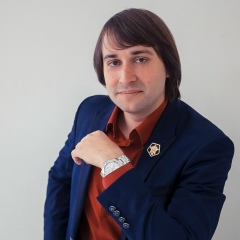The Cynefin Framework - система принятия решений и модель анализа уровня сложности контекста.
Модель кеневин (от валлийского "среда обитания") широко используется в управлении проектами, IT разработке и управлении знаниями. Подробнее об этом в рассказе автора модели Дейва Сноудена и статье о принятии решений в бизнесе в Harvard Business Review (ссылки в конце поста).
Даже поверхностное знакомство с моделью (а в ней зашито гораздо более больше принципов) помогает анализировать любую, организационную или жизненную ситуацию, которая объективно сложна или воспринимается как сложная.
Для иллюстрации я намеренно будут приводить достаточно простые примеры из повседневной жизни. Для того, чтобы копнуть глубже и понять, почему управленцы часто не распознают сложность контекста и стоящих перед ними задач, и к каким последствиям это приводит, читайте и смотрите по ссылкам.
Итак:
1. Если задача простая, и причинная-следственная связь в ней очевидна, достаточно воспользоваться самым лучшим решением.
Собравшись осенью в лес по грибы - одеть резиновые сапоги.
2. Если задача запутанная (усложненная, комплексная), и в ней не очевидна причинно-следственная связь, стоит приложить усилия для того, чтобы найти эту связь и выбрать любое подходящее решение.
Например, вы замечаете, что сильно устаете после общения к каким-то человеком. Не до конца понятно, что именно вызывает усталость - человек вам неприятен, вы общаетесь слишком долго или не о том, что для вас важно, возможно, делаете это в неподходящее время или месте. Разумный вариант решения - проанализировать встречи более внимательно, поэкпериментировать с решениями и найти для себя оптимальные.
3. Если задача сложная, очевидной причинно-следственной связи в ней нет или ее вам не уловить, то искать решение лучше всего опытным путем, извлекая выводы из своих экспериментов и создавая новые практики по ходу дела.
Например, вы хотите создать семью или вывести на рынок совершенно новый продукт. Эксперты и советчики могут помочь вам в этом лишь отчасти, в любом случае это будет путь личных проб, ошибок, экспериментов и открытий.
4. Есть еще хаотические ситуации, когда времени на анализ нет, а нужно как можно скорее стабилизировать ситуацию. Это любые чрезвычайные ситуации - пожар, смерть близкого, потеря работы и любых других жизненно важных ресурсов. Хорошо, если на случай хаотичных ситуаций, у вас был заранее продуман план или алгоритм действия. Но в любом случае в моменте придется действовать оперативно и по наитию.
Автор модели Дейв Сноуден утверждает, что большую часть времени люди проводят в состоянии беспорядка и непонимания того, с ситуациями какого типа они имеют дело. В условиях неопределенности и стресса все мы склонны упрощать реальность и выбирать не самые оптимальные стратегии, а то и просто впадать в ступор.
Надеюсь, эта модель поможет посмотреть на значимую сложную задачу и возможно, сменить стратегию решения.
Или при случае блеснуть новым словом в интеллектуальной компании :).
Дальше по ссылкам примеры из мира IT и бизнеса. Enjoy!
https://seniorsoftwarevlogger.com/2017/10/28/cynefin-framework/
https://hbr.org/2007/11/a-leaders-framework-for-decision-making
Дейв Сноуден о Cynefin - https://www.youtube.com/watch?time_continue=77&v=rCLth07UAsA
Модель кеневин (от валлийского "среда обитания") широко используется в управлении проектами, IT разработке и управлении знаниями. Подробнее об этом в рассказе автора модели Дейва Сноудена и статье о принятии решений в бизнесе в Harvard Business Review (ссылки в конце поста).
Даже поверхностное знакомство с моделью (а в ней зашито гораздо более больше принципов) помогает анализировать любую, организационную или жизненную ситуацию, которая объективно сложна или воспринимается как сложная.
Для иллюстрации я намеренно будут приводить достаточно простые примеры из повседневной жизни. Для того, чтобы копнуть глубже и понять, почему управленцы часто не распознают сложность контекста и стоящих перед ними задач, и к каким последствиям это приводит, читайте и смотрите по ссылкам.
Итак:
1. Если задача простая, и причинная-следственная связь в ней очевидна, достаточно воспользоваться самым лучшим решением.
Собравшись осенью в лес по грибы - одеть резиновые сапоги.
2. Если задача запутанная (усложненная, комплексная), и в ней не очевидна причинно-следственная связь, стоит приложить усилия для того, чтобы найти эту связь и выбрать любое подходящее решение.
Например, вы замечаете, что сильно устаете после общения к каким-то человеком. Не до конца понятно, что именно вызывает усталость - человек вам неприятен, вы общаетесь слишком долго или не о том, что для вас важно, возможно, делаете это в неподходящее время или месте. Разумный вариант решения - проанализировать встречи более внимательно, поэкпериментировать с решениями и найти для себя оптимальные.
3. Если задача сложная, очевидной причинно-следственной связи в ней нет или ее вам не уловить, то искать решение лучше всего опытным путем, извлекая выводы из своих экспериментов и создавая новые практики по ходу дела.
Например, вы хотите создать семью или вывести на рынок совершенно новый продукт. Эксперты и советчики могут помочь вам в этом лишь отчасти, в любом случае это будет путь личных проб, ошибок, экспериментов и открытий.
4. Есть еще хаотические ситуации, когда времени на анализ нет, а нужно как можно скорее стабилизировать ситуацию. Это любые чрезвычайные ситуации - пожар, смерть близкого, потеря работы и любых других жизненно важных ресурсов. Хорошо, если на случай хаотичных ситуаций, у вас был заранее продуман план или алгоритм действия. Но в любом случае в моменте придется действовать оперативно и по наитию.
Автор модели Дейв Сноуден утверждает, что большую часть времени люди проводят в состоянии беспорядка и непонимания того, с ситуациями какого типа они имеют дело. В условиях неопределенности и стресса все мы склонны упрощать реальность и выбирать не самые оптимальные стратегии, а то и просто впадать в ступор.
Надеюсь, эта модель поможет посмотреть на значимую сложную задачу и возможно, сменить стратегию решения.
Или при случае блеснуть новым словом в интеллектуальной компании :).
Дальше по ссылкам примеры из мира IT и бизнеса. Enjoy!
https://seniorsoftwarevlogger.com/2017/10/28/cynefin-framework/
https://hbr.org/2007/11/a-leaders-framework-for-decision-making
Дейв Сноуден о Cynefin - https://www.youtube.com/watch?time_continue=77&v=rCLth07UAsA
The Cynefin Framework - decision making system and model for analyzing the level of context complexity.
The kenevin model (from the Welsh “habitat”) is widely used in project management, IT development and knowledge management. Read more about this in the story of model author Dave Snowden and an article on business decision-making in the Harvard Business Review (links at the end of the post).
Even a superficial acquaintance with the model (and much more principles are sewn in it) helps to analyze any organizational or life situation that is objectively complex or perceived as complex.
To illustrate, I will intentionally give fairly simple examples from everyday life. In order to dig deeper and understand why managers often do not recognize the complexity of the context and the tasks they face, and what consequences this leads to, read and look at the links.
So:
1. If the task is simple, and the causal relationship in it is obvious, it is enough to use the best solution.
Gathering mushrooms in the forest in autumn - put on rubber boots.
2. If the task is complicated (complicated, complex), and the causal relationship is not obvious in it, it is worth making an effort to find this connection and choose any suitable solution.
For example, you notice that you get very tired after talking to some person. It’s not completely clear what exactly causes fatigue - a person is unpleasant to you, you are talking too long or not about what is important to you, maybe you are doing it at the wrong time or place. A reasonable solution is to analyze the meetings more carefully, experiment with the solutions and find the best ones for yourself.
3. If the task is complex, there is no obvious causal connection in it or you cannot catch it, then it is best to look for a solution empirically, drawing conclusions from your experiments and creating new practices along the way.
For example, you want to start a family or bring to market a completely new product. Experts and advisers can help you with this only partially, in any case it will be the path of personal trial, error, experimentation and discovery.
4. There are still chaotic situations when there is no time for analysis, but it is necessary to stabilize the situation as soon as possible. These are any emergency situations - fire, death of a loved one, loss of work and any other vital resources. It’s good if, in case of chaotic situations, you had a plan or algorithm of action in advance. But in any case, the moment will have to act promptly and on a hunch.
Model author Dave Snowden argues that most of the time people spend in a state of confusion and lack of understanding of what type of situations they are dealing with. In conditions of uncertainty and stress, we all tend to simplify reality and choose not the most optimal strategies, or simply fall into a stupor.
I hope this model helps to look at a significant complex task and, possibly, change the solution strategy.
Or, on occasion, show off a new word in an intellectual company :).
Further links are examples from the world of IT and business. Enjoy!
https://seniorsoftwarevlogger.com/2017/10/28/cynefin-framework/
https://hbr.org/2007/11/a-leaders-framework-for-decision-making
Dave Snowden about Cynefin - https://www.youtube.com/watch?time_continue=77&v=rCLth07UAsA
The kenevin model (from the Welsh “habitat”) is widely used in project management, IT development and knowledge management. Read more about this in the story of model author Dave Snowden and an article on business decision-making in the Harvard Business Review (links at the end of the post).
Even a superficial acquaintance with the model (and much more principles are sewn in it) helps to analyze any organizational or life situation that is objectively complex or perceived as complex.
To illustrate, I will intentionally give fairly simple examples from everyday life. In order to dig deeper and understand why managers often do not recognize the complexity of the context and the tasks they face, and what consequences this leads to, read and look at the links.
So:
1. If the task is simple, and the causal relationship in it is obvious, it is enough to use the best solution.
Gathering mushrooms in the forest in autumn - put on rubber boots.
2. If the task is complicated (complicated, complex), and the causal relationship is not obvious in it, it is worth making an effort to find this connection and choose any suitable solution.
For example, you notice that you get very tired after talking to some person. It’s not completely clear what exactly causes fatigue - a person is unpleasant to you, you are talking too long or not about what is important to you, maybe you are doing it at the wrong time or place. A reasonable solution is to analyze the meetings more carefully, experiment with the solutions and find the best ones for yourself.
3. If the task is complex, there is no obvious causal connection in it or you cannot catch it, then it is best to look for a solution empirically, drawing conclusions from your experiments and creating new practices along the way.
For example, you want to start a family or bring to market a completely new product. Experts and advisers can help you with this only partially, in any case it will be the path of personal trial, error, experimentation and discovery.
4. There are still chaotic situations when there is no time for analysis, but it is necessary to stabilize the situation as soon as possible. These are any emergency situations - fire, death of a loved one, loss of work and any other vital resources. It’s good if, in case of chaotic situations, you had a plan or algorithm of action in advance. But in any case, the moment will have to act promptly and on a hunch.
Model author Dave Snowden argues that most of the time people spend in a state of confusion and lack of understanding of what type of situations they are dealing with. In conditions of uncertainty and stress, we all tend to simplify reality and choose not the most optimal strategies, or simply fall into a stupor.
I hope this model helps to look at a significant complex task and, possibly, change the solution strategy.
Or, on occasion, show off a new word in an intellectual company :).
Further links are examples from the world of IT and business. Enjoy!
https://seniorsoftwarevlogger.com/2017/10/28/cynefin-framework/
https://hbr.org/2007/11/a-leaders-framework-for-decision-making
Dave Snowden about Cynefin - https://www.youtube.com/watch?time_continue=77&v=rCLth07UAsA

У записи 6 лайков,
3 репостов,
583 просмотров.
3 репостов,
583 просмотров.
Эту запись оставил(а) на своей стене Екатерина Новисова


























